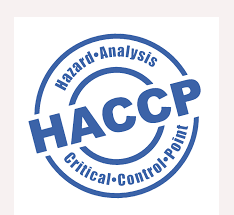
Introduction
According to the Food and Agricultural Organization (FAO) of the United Nations, HACCP is the system which identifies, evaluates, and control hazards that are significant for food safety. U.S. Food and Drug Administration has defined HACCP as a management system in which food safety is addressed through the analysis and control of biological, chemical, and physical hazards from raw material production, procurement, and handling, to manufacturing, distribution, and consumption of the finished product.
HACCP must be used by every business involved in the food supply chain from producers to retailer. Mainly those who are linked with business such as:
- Fruits and Vegetables
- Meat and Meat products
- Dairy Products
- Cereals
- Restaurants and Hotels
- Bakery and Confectionaries
- Nuts and Nuts products
Principles of HACCP
There are seven principles of the HACCP systems given by FAO and they are:
- Principle 1- Conduct a hazard analysis
- Principle 2- Determine the Critical Control Points (CCPs).
- Principle 3- Establish critical limit(s).
- Principle 4- Establish a system to monitor control of the CCP.
- Principle 5- Establish the corrective action to be taken when monitoring indicates that a particular CCP is not under control.
- Principle 6- Establish procedures for verification to confirm that the HACCP system is working effectively.
- Principle 7- Establish documentation concerning all procedures and records appropriate to these principles and their application.

References:
- U.S. Food and Drug Administration
- Food and Agricultural Organization
- National center for HACCP Certification India
